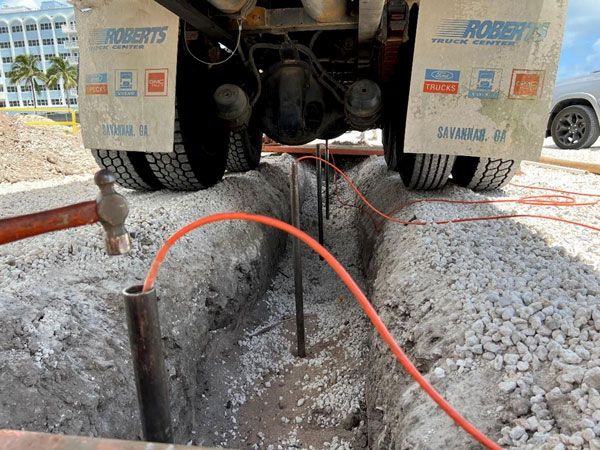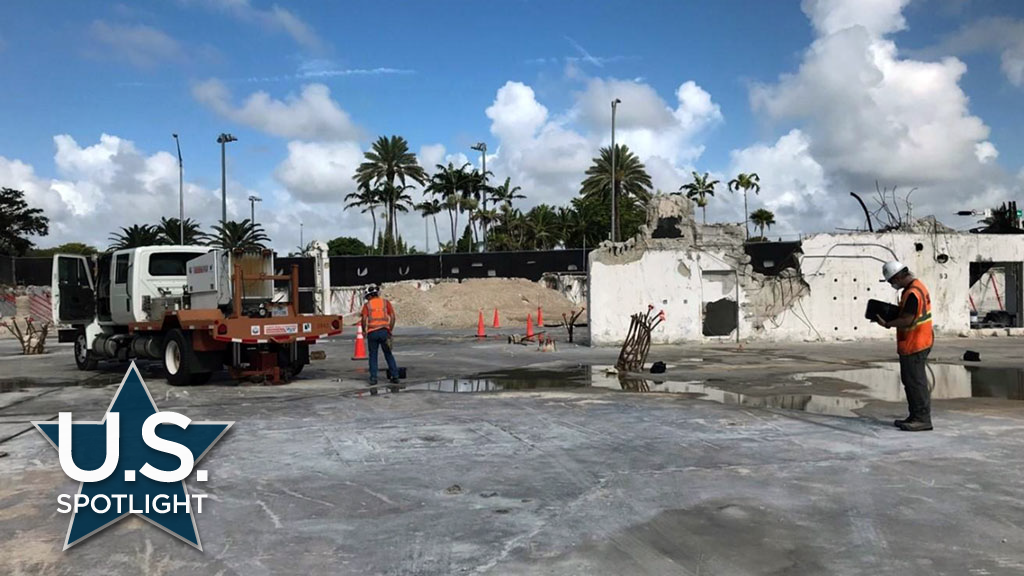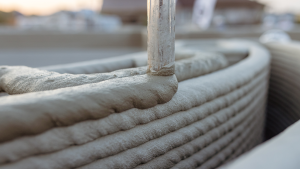While a $1.1-billion class-action lawsuit over the partial collapse of the Champlain Towers South condo in Surfside, Fla., has been settled, a probe into the reason for the tragic incident is still far from over.
The National Institute of Standards and Technology (NIST) is overseeing an investigation at the site of the 12-floor beachfront building that collapsed June 24, 2021, but a final conclusion could still be years away.
The early-morning disaster claimed the lives of 98 residents. There have been numerous theories as to the cause. Factors such as damage from saltwater intrusion, the quality of the original construction, delayed maintenance and structural complications, along with construction of a luxury condominium next door have all been put forward as possible reasons.
In an effort to find more answers, the NIST deployed a six-member National Construction Safety Team (NCST) to do tests at the site over the summer months and collect more data to help improve computer models that will be used to evaluate potential causes.
NIST’s role is to determine the technical cause of the collapse and, if indicated, to recommend changes to building codes, standards and practices, or other appropriate actions to improve the structural safety of buildings.
The safety team will be reporting its findings and efforts on other work related to the investigation to an advisory committee. The NIST will then present an update on the probe at a public meeting in Gaithersburg, Maryland.
The NCST was dispatched to the site in July, following the resolution of civil litigation related to the tragedy. A Miami-Dade County Circuit Court judge had ordered the turnover to NIST of materials and samples collected by the civil litigants and data and information derived from those materials and samples.
Although settlement money came from a variety of different sources, none of the parties has admitted any wrongdoing.
“After reviewing these materials, we decided to collect additional data from the collapse site that would reduce uncertainties in our models, and we identified the most appropriate tests we would need to conduct,” Judith Mitrani-Reiser, co-lead of the investigation, said in a statement released recently by the NIST. “We were able to leverage incredible resources and expertise through our inter-agency agreements with the National Science Foundation (NSF) and the U.S. Army Corps of Engineers.”
A specialized truck designed to shake the ground at specific frequencies was brought in. Nicknamed the Thumper, the mini mobile shaker created underground waves in designated parts of the site.

Sissy Nikolaou, co-leader of the investigation’s geotechnical engineering project, said the technology used by the team has been developed and applied primarily for earthquake research, so a building failure investigation is a novel application.
“We were able to bring together multiple types of cutting-edge technology to better comprehend the ground behavior at different depths,” she explained. “This will help us understand how the Champlain Towers South site conditions may have been impacted over time.”
The team used custom-built vibration sensors and pushed them into the ground to measure wave propagation, or how the waves moved through and were diminished by the soil layers.
With a unique configuration of sensors that formed a square, the researchers were able to see how the waves traveled through the site’s subsurface soils over relatively short distances and determine soil characteristics.
Investigators will use the data to help determine how the structure may have interacted with the soil and foundations beneath it, which may in turn have affected how it would have responded to various loads or stresses.
The data will also help researchers improve the accuracy of computer models created to describe the building and the site as they evolved over time and their condition at the time of collapse.
The team, and experts from the Georgia Institute of Technology, created high-resolution 3D images of the sections of foundation piles — long columns of concrete and steel — that were extracted from the site by experts used for the civil lawsuit.
The team also completed an inventory of specimens collected from the site by the civil litigants. To ensure the chain of custody was preserved, the transfer of those specimens was formally documented with an independent consultant employed by the civil litigants.
The materials have been preserved in a secure location in Miami-Dade County, under 24-hour surveillance, where they have been carefully measured and catalogued.
According to the NIST, the agency has begun the careful extraction of core samples of some of the evidence so that it can begin laboratory analysis and further inform computer models.











Recent Comments
comments for this post are closed